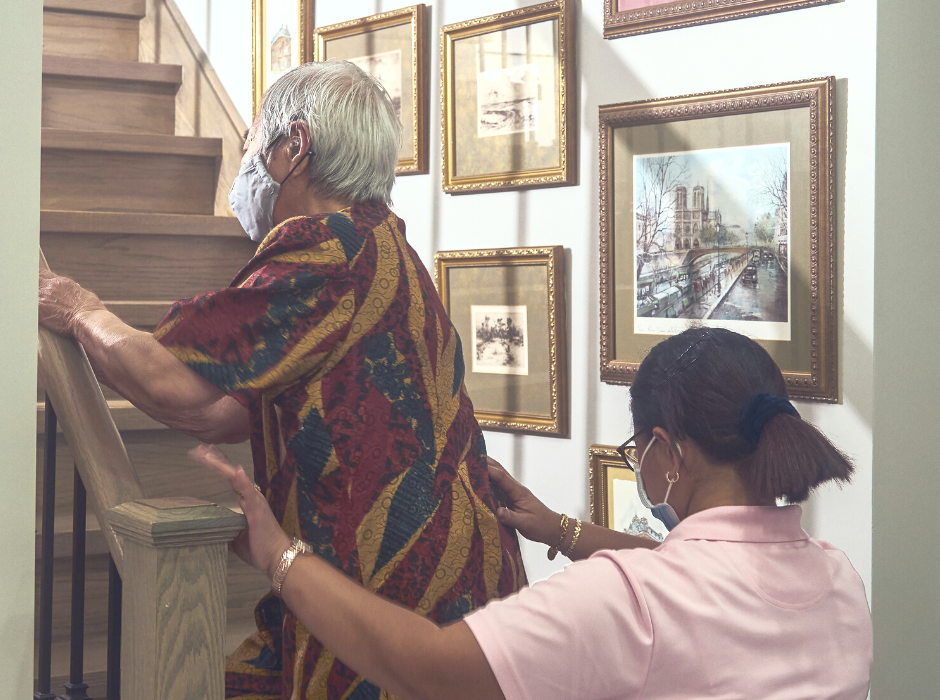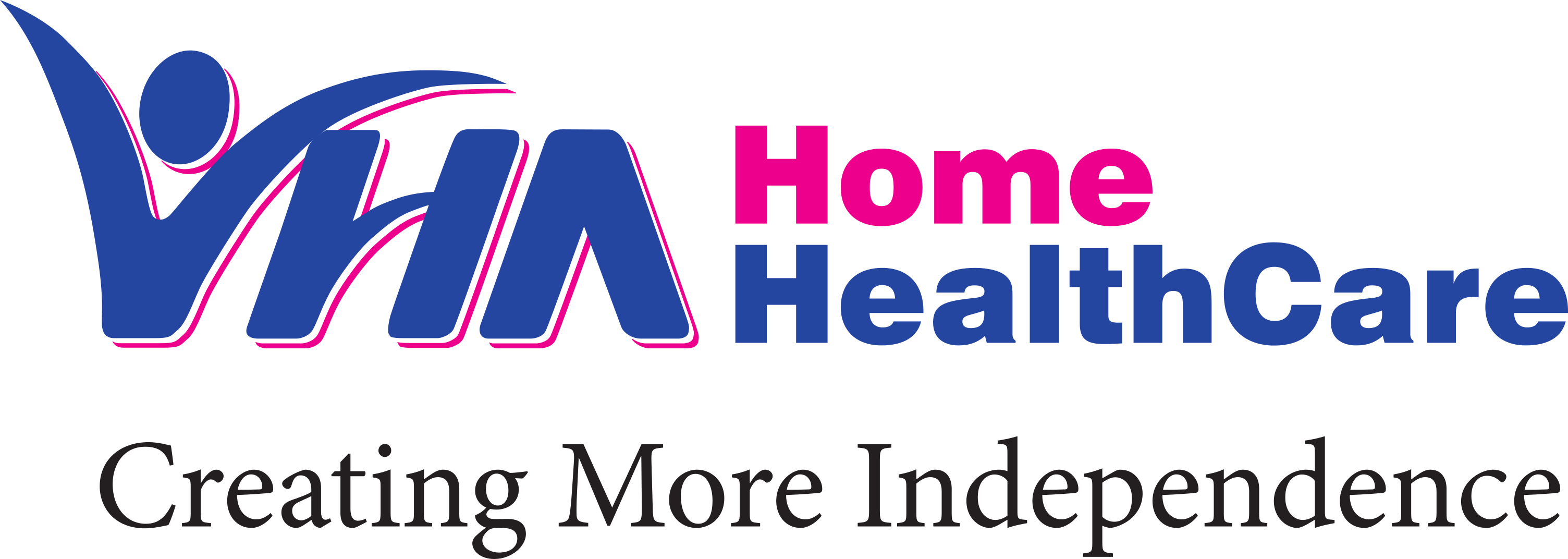Falls Prevention Checklist for Caregivers: Reduce the Risk at Home

Falls are the leading cause of injury-related hospitalizations for Canadians aged 65 and older and can lead to a significant decrease in quality of life as well as a loss of independence. With age, certain health challenges including poor balance, reduced vision, stiff joints and decreased muscle strength can make falls more likely. However, falls should not be considered a regular part of aging and in most cases can be prevented. If you are caring for an aging friend or family member, or are concerned about your own risk of falling, VHA’s Falls Prevention Checklist for Caregivers: Reduce the Risk at Home can help you make your home a safer space.
Depending on your specific mobility and health concerns, follow our guide to do a thorough room-by-room assessment. Here’s more information on identifying the most common hazards and the simple changes you can make to reduce the risk of a fall-related injury at home:
Kitchen
- Move heavy objects to lower cupboards.
- Relocate items that are used every day (food, dishes, cooking tools) to drawers and cupboards that are easy to reach. Keep these items between shoulder to knee height.
- Post important health information like doctors’ phone numbers, neighbours’ contact info, etc. on the fridge or another clearly visible location
- Consider using a reacher or grabber tool to avoid overextending yourself when reaching for items.
- Complete meal prepping while seated and consider taking seated breaks when cooking.
Bedroom
- Ensure that there is a clear path from the bed to the bathroom, removing any clutter, loose cords or obstacles.
- Install night lights in the bedroom and hallway that go on automatically after dark.
- Place a lamp and flashlight next to the bed that can be easily reached.
- Add a bedrail to make getting in and out of bed safer.
- Remove any throw rugs that can easily move and cause slipping or make sure any rugs are slip-resistant and secured with tape on the edges.
- Place a landline phone or charged cell phone within arm’s reach of the bed.
Bathroom
- Add a non-slip mat on the floor of the shower and/or bathtub as well as a secured, slip-resistant rug outside of the bath/shower.
- Install a raised toilet seat or a toilet surround for more support while sitting down and standing up from the toilet.
- Consider a shower chair or bath bench to allow for seated bathing.
- Use a handheld shower head to assist with showering or bathing tasks.
- Add a nightlight that turns on automatically after dark.
- Invest in grab bars by the toilet, shower and bathtub to help with sitting and standing.
Stairs and Steps
- Remove any loose items on the stairs (books, papers, etc.) and always keep stairs clutter-free.
- Replace any burnt out lightbulbs.
- If there is a light switch only at the top or bottom of your stairs, consider hiring an electrician to install switches that light up in the dark at the top and bottom of the stairs.
- Check that the carpet or stair runner is attached securely and that handrails are solid.
- Consider installing railings on both sides of stairwells for increased stability and safety.
- Add non-slip safety treads to bare wood stairs.
- To assist with poor vision, add coloured tape at the edge of stair steps.
Floors
- Remove any loose area rugs or use double-sided tape or rug grippers to secure rugs.
- If there isn’t a clear path to every room, ask someone to move any furniture that’s in the way.
- Pick up objects off the floor and find new permanent places to store items.
- Make sure any electrical, extension and telephone cords are coiled and taped to a wall, never securing cords under rugs.
- Repair any loose, broken or uneven floor boards.
- Only use anti-slip floor cleaners.
Outside
- Ensure all paths, stoops and steps have adequate lighting.
- Deck, front and garage steps should all have sturdy railings.
- Add neon, non-slip tape or painted stripes in contrasting colours to the edge of each step.
- Watch for uneven driveways, walkways or sidewalks and repair if possible. Otherwise, mark with orange spray paint.
- Keep walkways, stairs and sidewalks clear from snow and ice. If possible, hire a service to maintain these areas for you.
- Trim any bushes growing into walkways and have someone remove roots that stick out of the ground.
Other Safety Tips
- Invest in a personal alarm device to quickly and easily call for help in case a fall should happen.
- Always wear good quality, non-slip indoor shoes around the house.
- Have vision and hearing checked annually.
- Always wear any glasses and hearing aids and use walkers or canes as directed by a doctor or therapist. Make sure assistive devices are the correct height and have rubber tips for safety.
- Speak to a doctor about starting an exercise program to improve strength and balance.
- Review all medications with your doctor and pharmacist, including over-the-counter options, that may cause dizziness.
- Eat nourishing meals to prevent light-headedness or weakness.
If a fall does occur at home and you or the person in your care cannot get up or are in pain, call 911 immediately. If at any point after a fall, you or your care recipient experience nausea, dizziness, headaches or vision problems, visit a doctor right away.
With the right preventative measures, you can feel secure, independent and comfortable in your own home. If you are worried about fall safety, a VHA Occupational Therapist (OT) may be able to help. An OT can more thoroughly review your home for hazards and suggest practical changes to make everyday activities safer. Contact VHA’s Enterprise Health Solutions team at 416-489-2500 ext. 4649 or by email at ehs@vha.ca for more information.
Reviewed By: Banu Sundaralingam, OT Reg. (Ont.)
If you enjoyed this article, you may also like to read:
